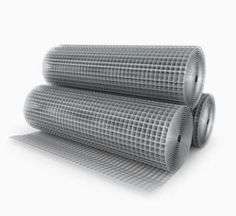Rockfall hazards pose significant risks to infrastructure, human life, and the environment, particularly in mountainous and steep terrain. As urban development and transportation networks expand into these regions, the need for effective mitigation measures has become increasingly vital. Among the various solutions, rockfall barriers stand out as a practical and reliable method to prevent damage and enhance safety.
Understanding Rockfall Hazards
Rockfalls occur when loose rocks or debris detach from cliffs, slopes, or man-made cuttings due to natural processes like weathering, seismic activity, or human activities such as construction and excavation. These falling rocks can gain high velocities, making them a substantial threat to roads, railways, buildings, and natural habitats. Without intervention, rockfall incidents can cause severe injuries, property damage, and costly disruptions to daily life.
The Role of Rockfall Barriers
Rockfall barriers are engineered systems designed to intercept and stop falling rocks before they reach vulnerable areas. These barriers are strategically installed in hazard-prone zones where the likelihood of rockfall is high. They provide a flexible, energy-absorbing solution that minimizes impact forces and safely contains debris.
Types of Rockfall Barriers
Rockfall barriers come in various forms, tailored to specific site conditions and risk levels:
1.Flexible Barriers: Made of high-tensile steel wire mesh, these barriers are designed to absorb high-energy impacts and dissipate forces. They are widely used in areas with frequent rockfall activity.
2.Rigid Barriers: Constructed using concrete, steel, or other solid materials, these barriers provide strong protection and are often installed near critical infrastructure.
3.Debris Fences: Similar to flexible barriers, these systems include additional netting to contain smaller debris and prevent material from spilling onto roads or railways.
4.Catch Ditches: While not a traditional barrier, catch ditches are excavated channels that collect and contain falling rocks, offering supplementary protection in high-risk areas.
Key Benefits of Rockfall Barriers
1.Safety Enhancement: By intercepting falling rocks, these barriers significantly reduce the risk of injury and damage to people, vehicles, and property.
2.Cost-Effective Mitigation: Compared to other large-scale solutions like slope stabilization or tunnel construction, rockfall barriers are often more economical and quicker to implement.
3.Adaptability: Rockfall barriers can be customized to suit varying terrain conditions, slope angles, and energy levels of falling rocks.
4.Minimal Environmental Impact: Properly designed barriers blend into the natural environment, minimizing ecological disruption and visual impact.
Applications in Hazard-Prone Areas
Rockfall barriers are widely used across the globe in regions prone to rockfall hazards. They are critical for:
- Mountain Roads and Highways: Protecting drivers and infrastructure from sudden rockfall incidents.
- Railway Lines: Preventing debris from obstructing tracks and disrupting train operations.
- Construction Sites: Safeguarding workers and equipment near unstable slopes.
- Urban Developments: Ensuring the safety of residential and commercial properties in steep or rocky environments.
Design and Installation Considerations
The effectiveness of rockfall barriers depends on several factors:
- Site Assessment: Detailed geological and environmental studies to determine rockfall frequency, energy levels, and slope stability.
- Energy Absorption Capacity: Barriers are selected based on their ability to withstand the impact forces of falling rocks.
- Maintenance Requirements: Regular inspections and maintenance ensure long-term functionality and reliability.
- Integration with Other Measures: Combining barriers with slope stabilization techniques, vegetation management, and warning systems provides comprehensive protection.
Conclusion
Rockfall barriers play a crucial role in safeguarding lives and infrastructure in hazard-prone areas. Their flexibility, cost-effectiveness, and proven performance make them an essential solution for mitigating rockfall risks. As technology advances, these systems continue to evolve, offering improved resilience and adaptability to the challenges posed by dynamic and unstable terrains. By investing in rockfall barriers, communities can enhance safety, protect investments, and foster sustainable development in areas exposed to natural hazards.







